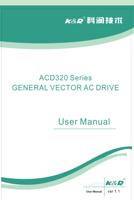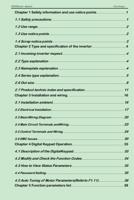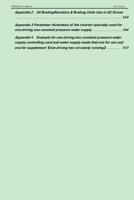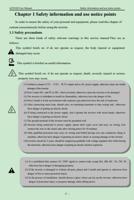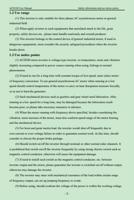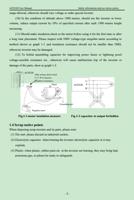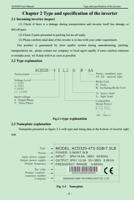
ACD320 user manual
Parameter Description
adjustment to the variance ratio of discrepancy between the PIDfeedback value and the assigned
value. TheTd is indicating the period of time within which if the feedback value is changed
100%, the regulating amount of integral controller is the maximum frequency (F0.04) (ignore
proportional action and integral action). The longer the Td, the bigger the controlling strength
is.PID is the most popularly used controlmode in process control, with each part playing different
role. Following simply introduces the operational principle and the controlling method:
Proportion control (P): when there is discrepancy between feedback and the
assignment,output the regulating amount in proportion to the discrepancy. If the discrepancy is
constant,the regulating amount keeps constant. Proportion control can response quickly to the
feedback variation, but only using proportion control is unable to perform noncorresponding
control. The bigger the proportional gain, the faster the system regulating speed, but being too
bigmay cause oscillation. The control method is first to set a long integrating time and a zero
differential time, and then run the system only by using proportion control. Change the assigned
value, and watch the stable discrepancy (steady-state error) of feedback signal and assigned value.
If the steady-state error is at the varying direction of assigned value (for instance, increase the
assigned value, the feedback value after the system is steady is always less than the assigned
value), continue to increase the proportional gain, otherwise decrease it.Repeat the above until
the steady-state error is relatively small (it is very difficult to do no steady-state error).
Integral time (I): when there is a discrepancy between the feedback and
assignment,continuously accumulate the output regulation amount. If the discrepancy still exists,
continue to increase the regulation amount until there is no discrepancy. Integral controller can
effectively eliminate the steady-state error. Integral controller being too strong can cause
repeated overshooting, systemunstable and up till oscillating. The characteristic of oscillation
caused by too strong integral action is that the feedback signal is swinging up and down around
the assigned value, and the amplitude of swing increases gradually till the oscillation happens.
Normally the integral time is adjusted from big to small, gradually regulate the integral time, and
watch the effect, until the systemstable speed meets requirements.
Differential time (D): when the discrepancy between feedback and assignment varies,output
a regulation amount in proportion to the variance ratio of discrepancy. The regulation amount is
related to the direction and magnitude of discrepancy variation, but irrelevant to the direction and
value of the discrepancy itself. The differential control action is to perform the control according
to the varying trendwhen the feedback signal variation happens, and thereby to restrain the
feedback signal variation. It should be caution to use differential controller as the differential
control have a trend to magnify the system interference, especially the high varying frequency
- 89-

